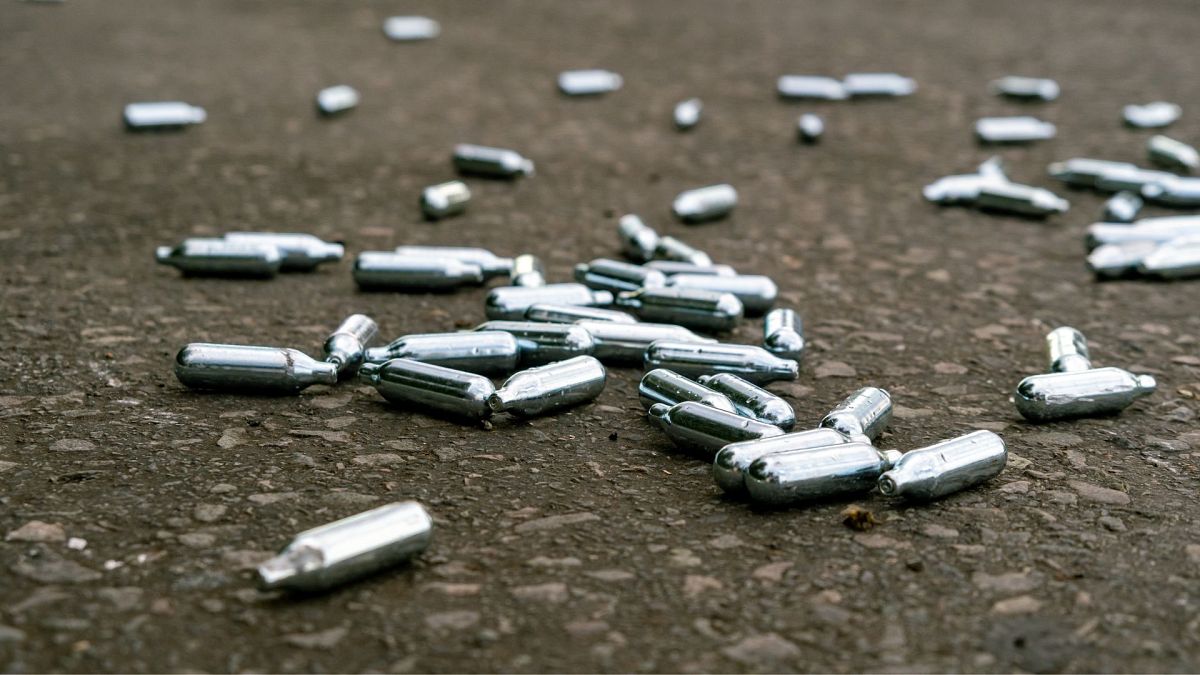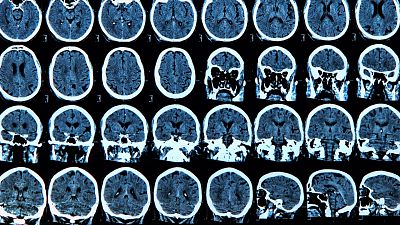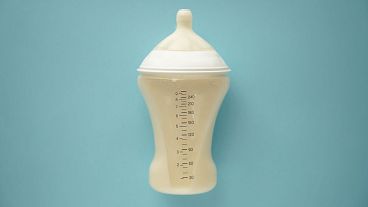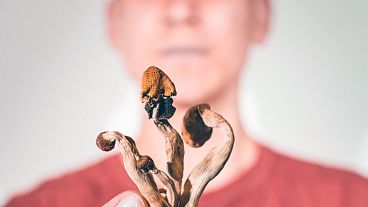Nitrous oxide has been growing in popularity as a recreational drug, as it can cause a feeling of euphoria, relaxation and dissociation from reality.
The use of laughing gas, which is on the rise among young people in Europe, is causing a worrying amount of poisonings, according to a European drugs monitoring agency.
In a new study, the European Monitoring Centre for Drugs and Drug Addiction (EMCDDA) warned of the dangers of inhaling nitrous oxide gas.
The substance has a number of legitimate medical, industrial, commercial and scientific uses, including as a food additive or as an anaesthetic in medicine.
Laughing gas has been growing in popularity as a recreational drug in recent years, as it can cause a feeling of euphoria, relaxation and dissociation from reality.
The EMCDDA said its popularity stems from its ease of access, as it can be bought over-the-counter at a low price, and there is a false perception that it is safe.
Small cartridges of the gas can be bought from legitimate sources, like convenience stores, supermarkets, and online suppliers, with a “profitable and expanding supply chain” developing, according to the report.
The cartridges are commonly used as an aerosol propellant to make whipped cream, but suppliers have also started selling bigger cylinders, deliberately targeting the recreational market.
The organisation presented case studies from European countries, examining the issue in Denmark, Ireland, France, Lithuania, the Netherlands, Portugal and the United Kingdom.
They found a rise in poisoning cases in Denmark, going from 16 in 2015 to 73 in 2021. In France, 134 cases were reported in 2020, up from 10 in 2017. And in the Netherlands, 2020 saw 144 cases in 2020, compared to 13 in 2015.
In the UK, nitrous oxide is the second most prevalent drug among young adults aged 16 to 24 years, after cannabis, the EMCDDA said.
Damage to the nervous system
The report details some of the negative effects on health that laughing gas can cause. It states that many of the cases reported to poison centres from 2017 onwards involve damage to the nervous system, or neurotoxicity.
That is a result of the irreversible inactivation of vitamin B12 in the body, which is vital for nerve function.
Some people suffered severe cases of frostbite from exposure to the freezing gas released from its container.
Others had lung injuries, caused by gas being released at high pressure from larger cylinders.
The Netherlands was also noted to have seen a “significant increase” in the number of car accidents with the cause attributed to nitrous oxide use.
The report does stress that the number of cases of poisoning and other injuries are still very small, and that most people do not use the drug.
However the rise in its use is a “cause for concern,” according to EMCDDA Director Alexis Goosdeel.
“There is a general perception among users that inhalation of nitrous oxide is safe. Yet we see that more frequent or heavier use of the gas increases the risk of serious harms, such as nervous system damage,” he said.
“It is, therefore, important to avoid normalising and unintentionally promoting its use. Targeted interventions and further research are needed to increase understanding of the risks and reduce harms”.
In order to control the use of the gas, the EMCDDA has proposed reducing the size of packages, banning sales to those under 18 or during night hours when party-goers tend to buy it.



